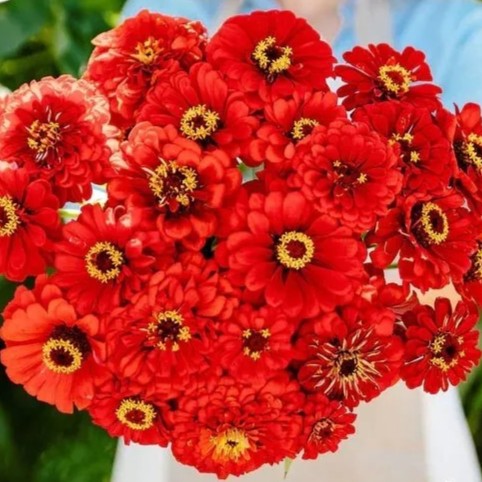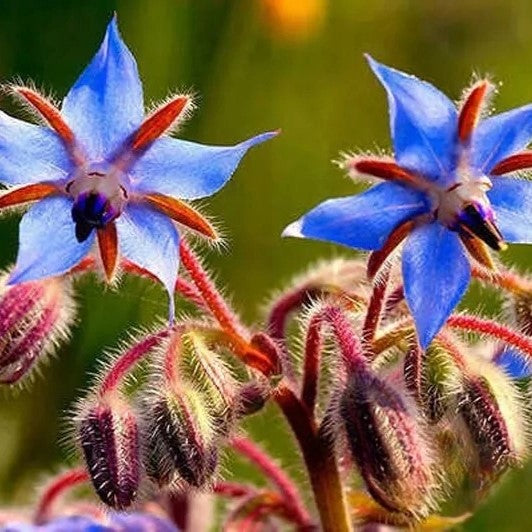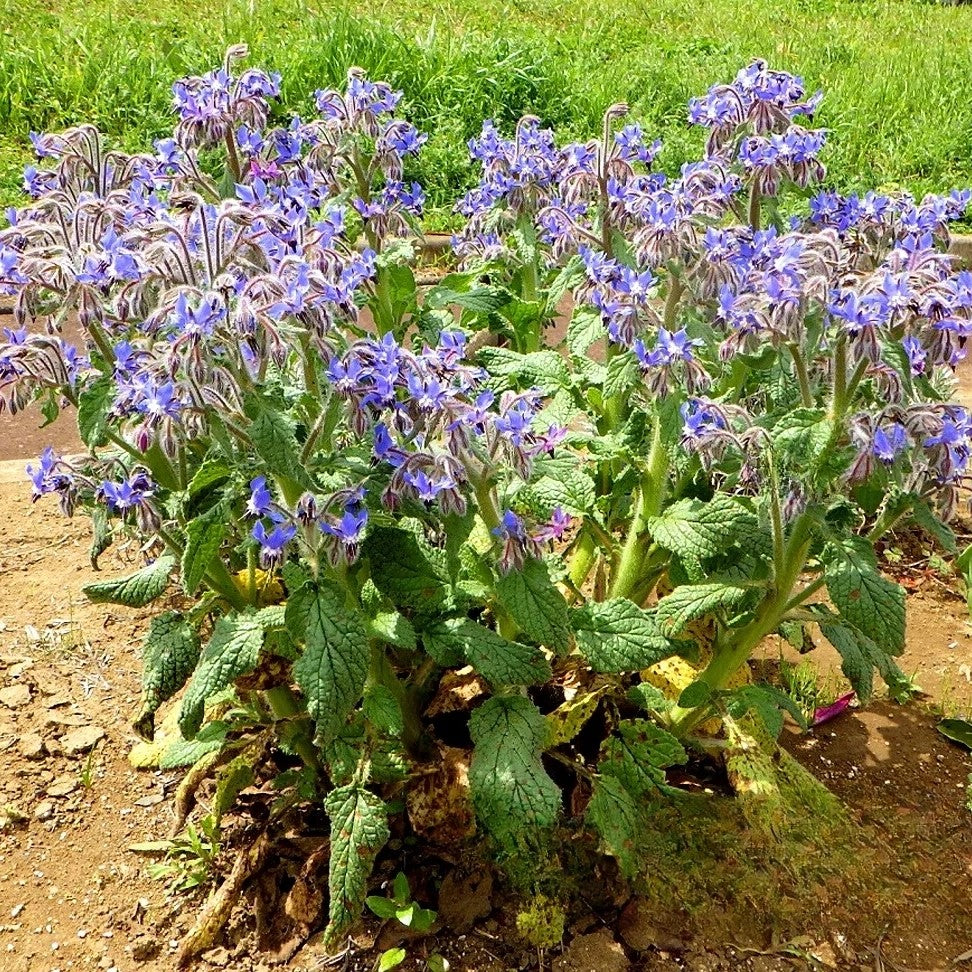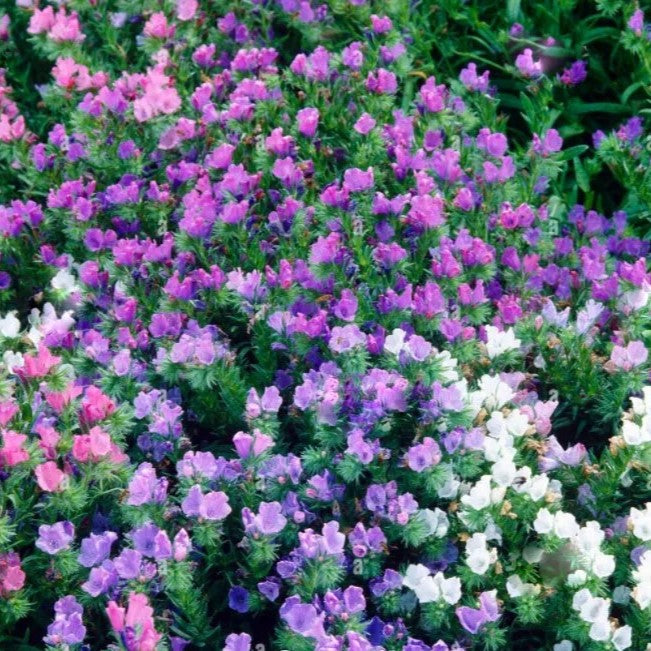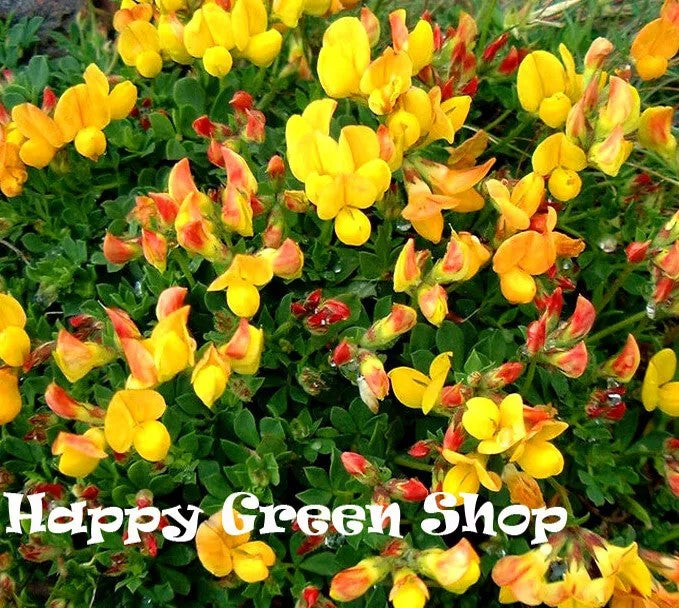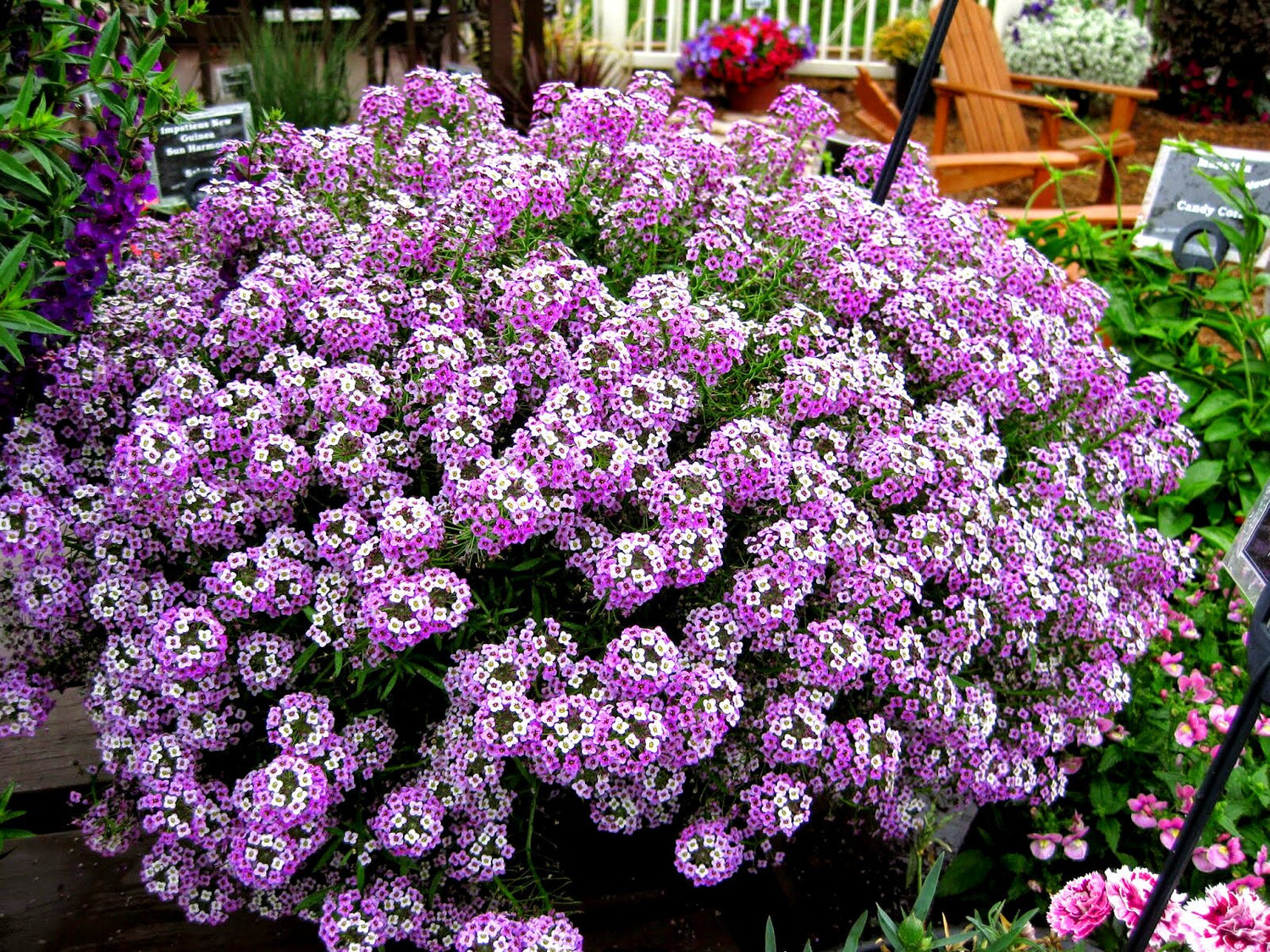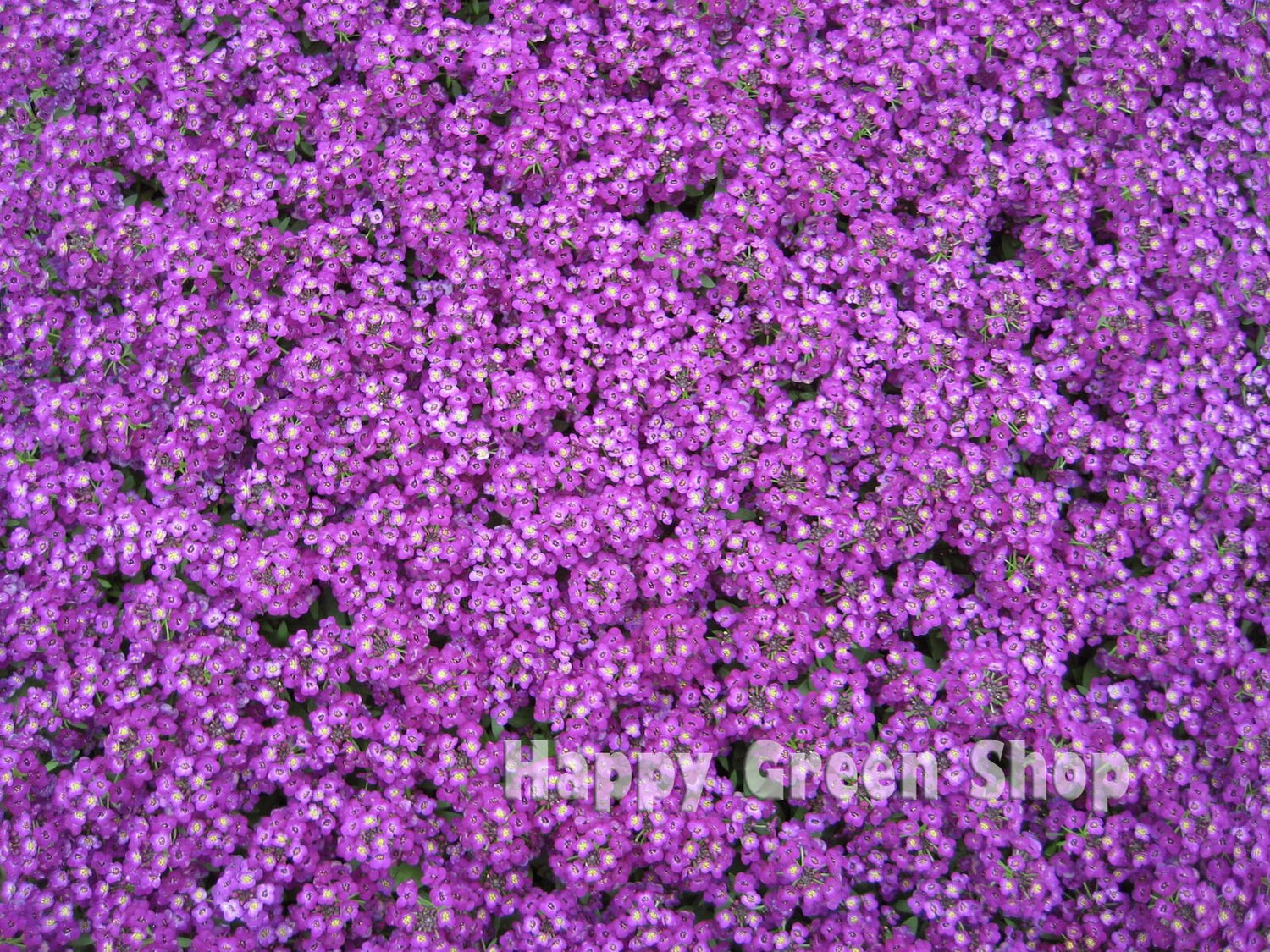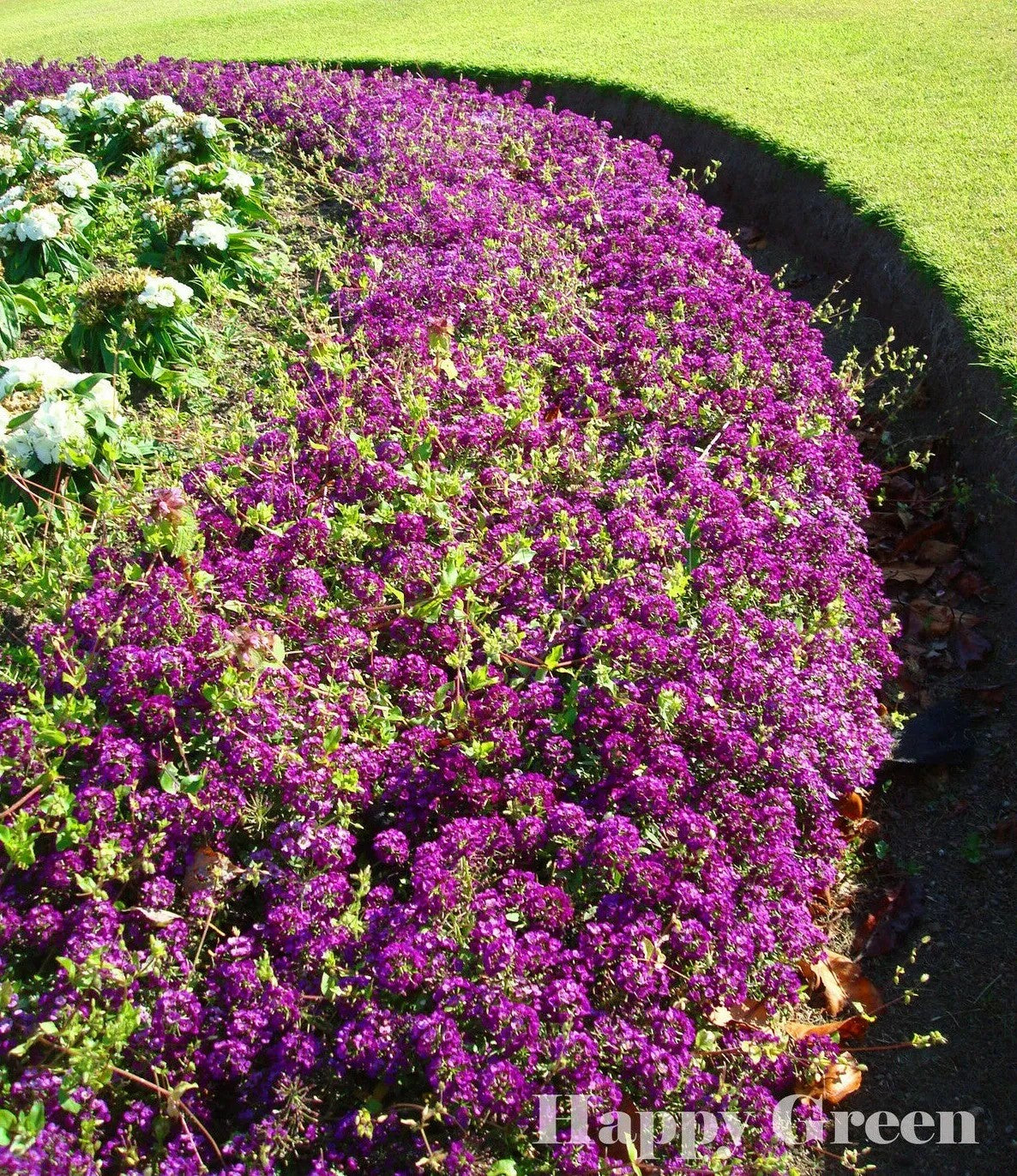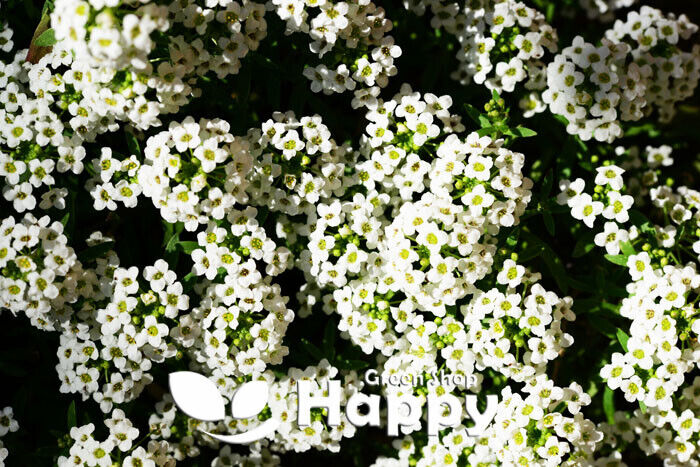Sort by:
128 products
128 products
Butterfly Wildflower Mix – 1g Seeds
Bring your garden to life with the Butterfly Wildflower Mix, specially selected to attract butterflies and other pollinators. This colorful blend combines hardy annuals and perennials that provide nectar-rich flowers from early summer through autumn. Easy to sow and low-maintenance, it creates a vibrant, wildlife-friendly display that supports biodiversity.
Why Grow Butterfly Wildflower Mix?
-
Specially formulated to attract butterflies
-
Long season of nectar-rich blooms
-
Easy to sow directly outdoors
-
Supports pollinators and biodiversity
Key Features
-
Type: Annuals and perennials mix
-
Height: 30–90 cm
-
Flowering: June–October
-
Position: Full sun
-
Coverage: 1 g covers approx. 1–2 m²
Ideal For
-
Wildlife and pollinator gardens
-
Naturalized areas and meadows
-
Cottage gardens and borders
-
Low-maintenance landscapes
Sowing & Growing
-
Sow outdoors: March–June or September
-
Rake soil to a fine tilth, scatter seeds evenly, cover lightly
-
Water gently until established
-
Thin seedlings where necessary
-
Allow some plants to self-seed for following years
Tip: For best results, sow in a sunny spot with poor to moderately fertile soil.
Borage – Seeds
(Borago officinalis) – Edible Flowers & Pollinator Magnet
Borage, also known as the starflower, is a fast-growing annual herb admired for its vivid blue, star-shaped flowers and fuzzy, cucumber-flavored leaves. A favorite of bees, butterflies, and other pollinators, it makes an excellent addition to herb gardens, vegetable patches, or pollinator-friendly borders. Both flowers and young leaves are edible – perfect for garnishing salads, desserts, drinks, or freezing into ice cubes.
Key Features
-
Plant type: Annual herb
-
Height: 50–70 cm
-
Spread: 30–40 cm
-
Flowers: Bright blue, star-shaped
-
Foliage: Grey-green, hairy leaves with cucumber flavor
-
Position: Full sun to light shade
-
Soil: Moderately fertile, well-drained
Ideal For
-
Herb & cottage gardens
-
Attracting pollinators (especially bees)
-
Edible flowers & herbal teas
-
Companion planting with tomatoes, strawberries, and courgettes
Sowing & Growing
-
Sow outdoors: April–June, direct in soil, 1 cm deep.
-
Germination: 7–14 days.
-
Spacing: Thin to 30 cm apart.
-
Flowering: June–September.
Care Tips
-
Easy to grow and self-seeding – will naturalize readily.
-
Pinch back growing tips for bushier plants.
-
Collect flowers regularly to encourage continuous blooming.
-
Water in dry spells but avoid overwatering.
Blueweed Flower Mix Seeds (Echium plantagineum)
The Blueweed Flower Mix is a vibrant and easy-to-grow annual that produces a spectacular display of blue, pink, violet, and purple trumpet-shaped blooms. Also known as Paterson’s Curse, this wildflower is prized for its striking colors and its ability to attract bees, butterflies, and other pollinators throughout summer. Perfect for naturalistic planting, wildflower meadows, or borders, this hardy mix thrives in poor soils and sunny sites, offering months of color with minimal care.
What Makes It Special
-
Long-lasting multi-colored floral display
-
Excellent for wildlife-friendly gardens
-
Thrives in dry, poor soils where other flowers may struggle
-
Perfect choice for naturalistic meadows and pollinator habitats
Key Features
-
Botanical name: Echium plantagineum
-
Common name: Blueweed / Paterson’s Curse
-
Seed count: Approx. seeds per pack
-
Height/Spread: 30–80 cm tall, 20–40 cm spread
-
Position: Full sun; well-drained sandy or gravelly soil
-
Flowering period: June–September
Ideal For
-
Wildflower meadows
-
Pollinator-friendly planting
-
Cottage gardens
-
Low-maintenance beds and borders
-
Naturalizing in sunny, dry spots
Sowing Instructions
-
When to sow: March–May outdoors or September for earlier blooms next year
-
How to sow:
-
Sow seeds directly where they are to flower, in well-prepared soil
-
Lightly rake in and firm down
-
Keep soil moist until germination (7–14 days)
-
-
Spacing: Thin seedlings to 20–30 cm apart
-
Care: Once established, requires very little maintenance. Tolerant of drought. Deadhead to prolong flowering.
Bird's-foot Trefoil – Seeds (Lotus corniculatus)
Bird’s-foot Trefoil (Lotus corniculatus) is a hardy perennial wildflower, valued for its clusters of cheerful, golden-yellow blooms. A classic addition to meadows and wildlife gardens, it attracts bees, butterflies, and other pollinators while also serving as a food source for caterpillars. Its trailing, mat-forming habit makes it perfect for natural landscaping, wildflower lawns, or erosion control on banks and slopes.
Why Grow Bird’s-foot Trefoil?
-
Bright yellow pea-like flowers from June to September
-
Excellent nectar and pollen source for bees and butterflies
-
Nitrogen-fixing plant that enriches soil
-
Low-growing, mat-forming habit—ideal for ground cover
-
Thrives in poor soils and challenging sites
Key Features
-
Type: Perennial wildflower
-
Height: 10–40 cm
-
Position: Full sun; well-drained soil
-
Uses: Meadows, wildlife gardens, slopes, banks, natural lawns
Ideal For
-
Creating pollinator-friendly wildflower meadows
-
Soil improvement in poor or sandy sites
-
Low-maintenance ground cover
-
Naturalizing in grass or wild areas
Sowing & Growing
-
Sow outdoors: Spring or autumn directly into prepared soil
-
Sow thinly, rake in lightly, and water gently
-
Germination: 2–4 weeks
-
Flowers: Summer from the second year onward
Angel Wings 'Dr Badger's' hybrids mix - 1000 seeds (Schizanthus wisetonensis)
£1.15
Unit price perAngel Wings 'Dr Badger's' hybrids mix - 1000 seeds (Schizanthus wisetonensis)
£1.15
Unit price perAngel Wings ‘Dr Badger’s’ Hybrids Mix – 1,000 Seeds (Schizanthus wisetonensis)
Angel Wings ‘Dr Badger’s’ Hybrids (Schizanthus wisetonensis) is a stunning annual producing delicate, fringed blooms in a mix of vibrant colors. Its compact, bushy habit makes it perfect for borders, containers, and rockeries. Easy to grow and long-flowering, it adds a touch of exotic beauty to gardens while attracting pollinators.
Why Grow "Dr Badger’s Hybrids"
-
Fringed, vibrant blooms in assorted colors
-
Compact, bushy growth habit
-
Long flowering season from summer to autumn
-
Attracts bees and butterflies
Key Features
-
Type: Annual (Schizanthus wisetonensis)
-
Height: 20–40 cm
-
Flowering: June–September
-
Position: Full sun to partial shade
-
Uses: Borders, containers, rockeries, pollinator-friendly gardens
Ideal For
-
Cottage-style and ornamental borders
-
Container planting and patios
-
Pollinator-friendly gardens
-
Rockeries and small garden beds
Sowing & Growing
-
Sow indoors: February–April in seed trays or pots
-
Sow outdoors: After last frost in prepared soil
-
Germination: 10–20 days at 18–20°C
-
Thin seedlings to 15–20 cm apart
-
Prefers well-drained soil and sunny positions
-
Deadhead occasionally to encourage prolonged flowering
Alyssum 'Royal Carpet' Seeds (Lobularia maritima)
Alyssum 'Royal Carpet' is a stunning, low-growing annual that produces masses of deep violet-purple, honey-scented flowers. Forming a compact and spreading mat, it’s a perfect choice for borders, rock gardens, containers, or as ground cover. Its sweet fragrance attracts bees, butterflies, and other pollinators, adding life and colour to your garden.
What Makes It Special
-
Striking rich violet-purple blooms with a sweet fragrance
-
Compact, neat growth – great as a living carpet
-
Long-lasting flowers from spring through autumn
-
Easy to grow and low maintenance
Key Features
-
Botanical name: Lobularia maritima
-
Variety: 'Royal Carpet'
-
Seed count: Approx. seeds per pack
-
Height/Spread: 10–15 cm tall, 20–30 cm spread
-
Position: Full sun to partial shade; thrives in well-drained soil
-
Flowering period: May–September
Ideal For
-
Edging borders and paths
-
Rockeries and gravel gardens
-
Containers, window boxes, and hanging baskets
-
Pollinator-friendly spaces
Sowing Instructions
-
When to sow: March–May indoors; April–June directly outdoors
-
How to sow:
-
Scatter seeds thinly on the surface of moist soil and press lightly (do not cover – requires light to germinate).
-
Germination: 7–14 days at 15–20°C.
-
-
Transplanting: Thin seedlings to 10–15 cm apart once established.
-
Care: Keep soil evenly moist, and deadhead to encourage continuous blooming.
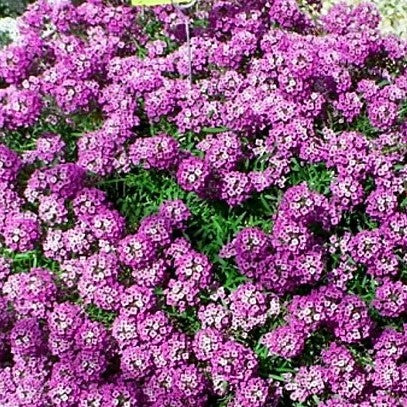
Alyssum 'Rosie O'Day' - 1600 seeds (Lobularia maritima) Rose-pink Carpet forming
£1.15
Unit price perAlyssum 'Rosie O'Day' - 1600 seeds (Lobularia maritima) Rose-pink Carpet forming
£1.15
Unit price perAlyssum 'Rosie O'Day' Seeds (Lobularia maritima)
Alyssum 'Rosie O'Day' is a vibrant, rose-pink, carpet-forming annual with a compact, spreading habit. Its masses of small, fragrant flowers create a stunning display in borders, rock gardens, containers, or hanging baskets. Loved by pollinators, it blooms continuously throughout the summer, brightening any garden space.
What Makes It Special
-
Rose-pink, fragrant blooms that form a dense, carpet-like cover
-
Compact and low-growing – perfect for edging and containers
-
Long-lasting flowering from spring to autumn
-
Attracts bees, butterflies, and other pollinators
Key Features
-
Botanical name: Lobularia maritima
-
Variety: 'Rosie O'Day'
-
Seed count: Approx. seeds per pack
-
Height/Spread: 10–15 cm tall, 20–30 cm spread
-
Position: Full sun to partial shade; well-drained soil
-
Flowering period: May–September
Ideal For
-
Edging paths and borders
-
Rockeries and gravel beds
-
Containers, window boxes, and hanging baskets
-
Pollinator-friendly gardens
Sowing Instructions
-
When to sow: March–May indoors; April–June outdoors
-
How to sow:
-
Sow seeds thinly on the soil surface and press lightly (do not cover – seeds need light to germinate)
-
Germination takes 7–14 days at 15–20°C
-
-
Transplanting: Thin seedlings to 10–15 cm apart when large enough
-
Care: Water lightly and regularly; deadhead to encourage continuous blooms
Alyssum 'Oriental Nights' Seeds (Lobularia maritima)
Alyssum 'Oriental Nights' is a striking carpet-forming annual with deep purple, almost black, fragrant flowers. Its compact, spreading habit makes it perfect for creating dramatic contrast in borders, containers, and rock gardens. Loved by pollinators, it produces a long season of continuous blooms from spring through autumn.
What Makes It Special
-
Deep purple, nearly black flowers for dramatic contrast in the garden
-
Compact, low-growing, and spreading habit
-
Long-flowering and highly fragrant
-
Attracts bees, butterflies, and other pollinators
Key Features
-
Botanical name: Lobularia maritima
-
Variety: 'Oriental Nights'
-
Seed count: Approx. seeds per pack
-
Height/Spread: 10–15 cm tall, 20–30 cm spread
-
Position: Full sun to partial shade; well-drained soil
-
Flowering period: May–September
Ideal For
-
Edging borders and paths
-
Rockeries and gravel beds
-
Containers, window boxes, and hanging baskets
-
Pollinator-friendly and contrast planting
Sowing Instructions
-
When to sow: March–May indoors; April–June outdoors
-
How to sow:
-
Sow seeds thinly on the soil surface and press lightly (do not cover – seeds need light to germinate)
-
Germination takes 7–14 days at 15–20°C
-
-
Transplanting: Thin seedlings to 10–15 cm apart once established
-
Care: Water lightly and regularly; deadhead to encourage continuous blooms
Alyssum 'New Carpet of Snow' Seeds (Lobularia maritima)
Alyssum 'New Carpet of Snow' is a classic, compact annual producing a dense carpet of pure white, honey-scented blooms. Its neat, spreading growth makes it one of the most popular edging plants, creating a bright and fragrant border along paths, beds, and rock gardens. The flowers attract bees and other pollinators, making it both beautiful and beneficial in the garden.
What Makes It Special
-
Pure white, sweetly scented flowers
-
Compact and neat, perfect for edging and ground cover
-
Long-flowering from spring through autumn
-
Easy to grow and drought-tolerant once established
Key Features
-
Botanical name: Lobularia maritima
-
Variety: 'New Carpet of Snow'
-
Seed count: Approx. seeds per pack
-
Height/Spread: 10–15 cm tall, 20–30 cm spread
-
Position: Full sun to partial shade; thrives in well-drained soil
-
Flowering period: May–September
Ideal For
-
Edging borders and pathways
-
Rock gardens and gravel beds
-
Window boxes, planters, and hanging baskets
-
Pollinator-friendly and low-maintenance gardens
Sowing Instructions
-
When to sow: March–May indoors; April–June directly outdoors
-
How to sow:
-
Sow seeds thinly on the soil surface and press gently down (do not cover, needs light to germinate)
-
Germination: 7–14 days at 15–20°C
-
-
Transplanting: Thin seedlings to 10–15 cm apart when large enough to handle
-
Care: Keep soil moist but well-drained; deadhead to prolong flowering.
Showing 126/128


